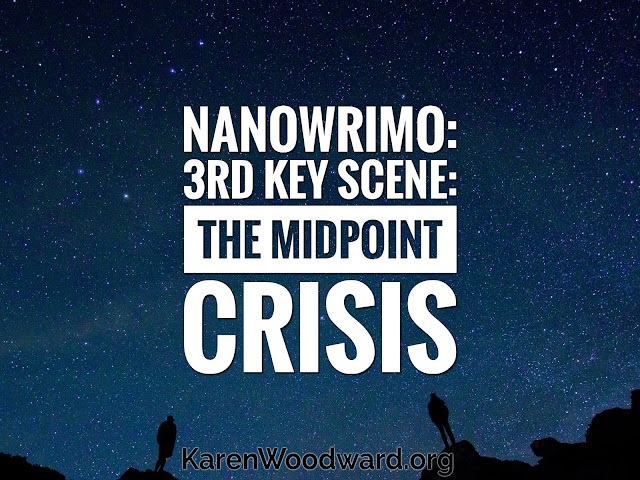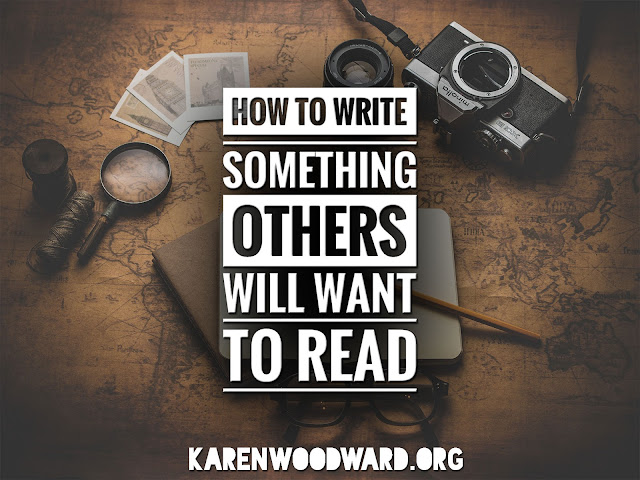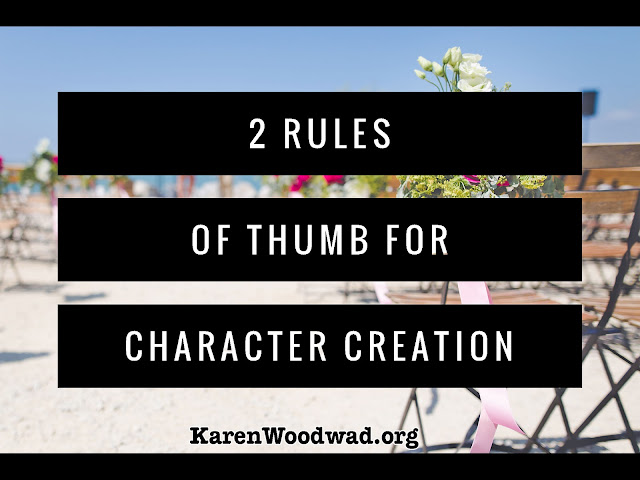I find that when I write, as in life, I need to know where I’m going in order to get there. Yesterday I tackled
the first key story scene, now I’ll leapfrog to the second to last: the Climax.
What happens at the Climax will determine everything else in the story, at least in terms of which goals feature in the preceding scenes, sequences and acts.
Subplots: An Aside
I’m not going to go into subplots in any detail today, but I thought I would at least mention them. A subplot has the same structure as any storyline (this sequence is from Shawn Coyne's book
The Story Grid): Inciting Incident, Escalating Complications, a Midpoint Crises, a Climax and a Resolution.
In a main arc, all or most of the key story scenes must be onstage—think of a murder mystery where you don’t actually get to ‘see’ the body, you only hear about it after the fact through dialogue or narration, but you don’t get to see it through the viewpoint character’s senses. That would be FRUSTRATING!
In a subplot, on the other hand, omitting key scenes—especially minor ones—is absolutely necessary. After all, if a subplot and the main story arc each have equal weight then you would be writing two stories rather than one. [1]
Depending on the length of your final manuscript you’ll have at least one subplot. The key thing is that the ending of each subplot should integrate back into the main story line in such a way that it ratchets up the stakes and propels the story forward.
For example, in
The Matrix Cypher betrays Morpheus to the Machines in exchange for being reinserted into the Matrix. That’s the subplot. (The story question in that movie was: Is Neo the One?) In the first of the three big setbacks, Cypher betrays the resistance and kills Switch.
Cypher is about to kill Neo when he says something to the effect, “If Neo really is the One then I won’t be able to kill him, some kind of miracle will have to happen to stop me.” Right then someone I thought was dead gets up, grabs a weapon and kills Cypher. This closes out the subplot AND ties into the main arc by adding weight to the idea that, despite the Oracle’s denial, Neo is indeed the One.
Let’s test the subplot:
a. Were the stakes raised because of the resolution of the subplot? Yes! Agents have captured Morpheus and are torturing him for the codes that, if surrendered, will snuff out the last spark of human resistance.
b. Does the resolution of the subplot advance the main plot? Yes! The Oracle has told Neo he will have to choose between his life and Morpheus’ life. Neo decides Morpheus must live and goes to save him. This launches us into the last long and wonderful action-packed race to the finish. Terrific subplot!
c. Was the subplot itself well-formed? Yes, though I won’t step through its structure here.
The Story Question
The story question is simply: Will the protagonist succeed in achieving her goal? For example, here is the story question for Jim Butcher’s novel Storm Front:
“When a series of grisly supernatural murders tears through Chicago, wizard Harry Dresden sets out to find the killer. But will he succeed when he finds himself pitted against a dark wizard, a Warden of the White Council, a vicious gang war, and the Chicago Police Department?” [2]
Now, let's focus on what this post is really about, the climactic scene of your story.
The Climax: Breaking It Down
Yesterday I said that the Inciting Incident was the most important scene in your story—and it is. If the Inciting Incident falls flat, readers will become bored and stop reading. The Climax, though, is the second most important scene in a story. As someone once said to me: the first few pages of a novel sell that novel, the ending of the novel sells the next novel.
What is it?
The Climax answers the story question. It unambiguously shows the reader whether the protagonist won or lost the final confrontation with the antagonist.
The Climax should be unexpected. The best climaxes surprise us in the moment and then, upon reflection, seem inevitable.
The Climax should unfold because of the choices the main characters (especially the protagonist and antagonist) have made throughout the story.
Where is it?
The Climax usually occurs at some point in the last ten or five percent of the story. After the story question is answered the story is over. All that is left to do is wrap things up and cash out the stakes.
How is it connected to the protagonist’s desires?
Since the Climax unfolds from the choices the main characters make in the story—especially the choices the protagonist makes—and since the protagonist’s choices are driven by their external (and possibly internal) desire, ultimately, it is the protagonist’s desires that drive the action at the Climax.
How is it structured?
I’m not normally going to break down the structure of a key scene, but the climax strikes me as the most persnickety of the key scenes. (Here I draw from Jim Butcher’s article,
Story Climax.)
a) Specific and Vivid
A specific, vivid, concrete event should mark the start of the Climax.
b) Protagonist is Alone
The protagonist needs to meet the antagonist by herself, alone, without backup.
c) Protagonist is Active
The protagonist needs to be active, she must bring the fight to the antagonist rather than the other way around.
d) False Failure
There should be one last gut-wrenching moment where your readers think (again!) that all is lost (e.g., Neo dies at the end of The Matrix; he gets back up, but the death itself is an gut-twisting ‘oh no!’ moment.).
e) Actions Must be Voluntary
The hero needs to make one last choice. Jim Butcher writes:
“Your protagonist has to CHOOSE whether or not to stay true to his purpose or to let himself be swayed by fear, by temptation, by weariness, or by anything else. In that Dark Moment, he has to make the call that ultimately reveals who your protagonist really is, deep down.” [2]
Further, this choice should be one that any rational person would consider completely insane. Why would anyone turn away from the only thing that has any hope of working to do thing that can’t work! But sometimes your protagonist has to turn away from the sure thing, from the way things are done, and do the apparently irrational thing that takes faith, that draws on their special skill, their special talent, their special way of seeing the world. Trust yourself Luke, use the force.
f) Dramatic reversal
Jim Butcher writes, “The intrinsic nature of the story or of the protagonist's character influences or causes the events of the confrontation to be changed in an unexpected way, causing an outcome that is in harmony with the principles of poetic justice.” [2]
In other words, the solution your protagonist comes up with, why she wins the final confrontation, has to stem from your protagonist’s character, her strengths and weaknesses, his internal and external desires.
For more on this see:
Jim Butcher On How To Write A Suspenseful Story Climax
The Climax: Examples
At the climax of
The Matrix Neo becomes the One and transcends the Matrix. He lives in it but is not of it, he is no longer bound by it. Neo’s transformation reaches back to the desire he had at the beginning of the movie, to know the answer to the question, “What is the Matrix?” In general, Neo wanted to know the truth about the world around him and his place it in. You know, the simple stuff. ;)
Also, notice that Cypher tells Neo (and it seems as though he’s genuinely trying to help) to just do what they all do when they see an agent: run away. And Neo does this. Even after he fights Agent Smith in the penupulate fight of that movie, Neo is forced to flee. Agent Smith is operating on a higher plane, one no human has ever reached. It is only when Neo is forced to stop running (by being shot in the chest several times!) that something entirely illogical happens. After Trinity tells Neo she loves him and gives him a kiss he comes back to life. He has achieved his goal and now transcends the Matrix. Essentially, love played the role here that faith/trust played in the Matrix.
I’ll give you another example just because I loved the ending so much! In Edge of Tomorrow the protagonist, Cage, is branded a coward. This is because when given a choice between fighting and fleeing Cage displayed a decided preference for
fleeing. By the middle of the movie, though, Cage has gained some courage and he is learning to care about the good of the group and not just his own personal good. By the end of the movie he is willing to lay down his life for his team and for the greater good. There is a very clear, consistent, entertaining progression from cowardice to courage.
Testing The Scene Example
Does the climax of The Matrix answer the story question, “Is Neo the One?” Yes! We get to see (as much as such a thing can be seen) Neo transform into the One. We also see his power in action when he destroys Agent Smith.
Did the climax of The Matrix surprise us? It surprised me. Even though I was fairly sure Neo was the One it did make me reconsider when Smith shoots and kills Neo. At that moment I honestly thought Neo was going to die and fail in his quest. So I was surprised when, after suitable prompting by Trinity, he gets up and obliterates Smith.
Does the Climax unfold because of the choices of the main characters? Yes. Neo chose to rescue Morpheus, and he did this believing that he wasn’t the One. He did this believing his fate would be to simply die but that his death would ensure Morpheus would live.
How the Climax is implemented in three genres: Action, Romance & Mystery
Action Genre
The Climax Scene is the ultimate confrontation between the protagonist and antagonist. In the action genre—as, indeed, in all genres—the protagonist and antagonist come into direct and final opposition. There can be no ambiguity that, this time, only one of them will walk away from the fight.
Romance Genre
The Climax is where the lovers get back together.
We haven’t looked at this scene yet, but the All Hope is Lost point in a romance is where the lovers break up, and this breakup seems final. Irrevocable. There is no possible way these two people can have any future with each other. The Climax settles whether their breakup really is forever. In the overwhelming majority of romance stories, they join together.
It’s important to note, though, that when the lovers reconcile it is because something deep within one or both of them has changed. They were incompatible because of something essential to each of them—or something they thought was essential. Often this happens in the
Proof of Love scene. One or both of them do something selfless for the other even though there is no hope of reconciliation. This act of selflessness demonstrates the change that has occurred, or is occurring, within.
Murder Mystery Genre
In a mystery story the Climax is the big reveal. Here the sleuth goes over each person's motive, means and opportunity for committing the crime. In so doing, all the clues are trotted out and the sleuth explains how each relates to the murder. Most of the clues will prove to either be about crimes (or, possibly, titivating embarrassments) that have nothing to do with the murder.
I’ve written a number of articles on the topic of writing a murder mystery. If you’d like to give them a look I've listed them here along with a brief summary:
How To Write A Murderously Good Mystery. (At some point next year I hope to publish the information contained in those many, scattered, articles into a medium sized book.)
Every post I pick a book or audiobook I love and recommend it to my readers. This serves two purposes. I want to share what I’ve loved with you, and, if you click the link and buy anything over at Amazon within the next 24 hours, Amazon puts a few cents in my tip jar at no cost to you. So, if you click the link, thank you! If not, that’s okay too. I’m thrilled and honored you’ve visited my blog and read my post. :-)
Today I'd like to recommend a book that's on my desk right now. I love it! It's basically a writing prompt generator that's also a pulp-and-paper book. Just now I opened it at random and here's the prompt I got:
Upon winning the lottery, a gold prospector develops short-term memory loss. Here's another:
On vacation for the first time in years, a night watchman goes on a blind date. If you're a story geek or you love playing around with writing prompt, this book will make you happy! Here's the link: The Amazing Story Generator:
Creates Thousands of Writing Prompts.
That's it for today! Thanks for reading and I'll talk to you again tomorrow, when I talk about another key story scene.
Word count so far: 1678
Word count for this article: About 2,100 words.
Word count so far: 3,778 words.
Notes:
1. This does happen. Some stories are told from the viewpoint of multiple characters, the aptly named viewpoint characters. For example, the lovers in a romance are often viewpoint characters, each finding their voice every other chapter. Sometimes this is effective, sometimes not. But if this is the first long-form story you’ve written don’t worry about subplots. At least, hold off on thinking too much about them until you’ve got the main arc hammered out.
2.
Story Climax, Jim Butcher.









